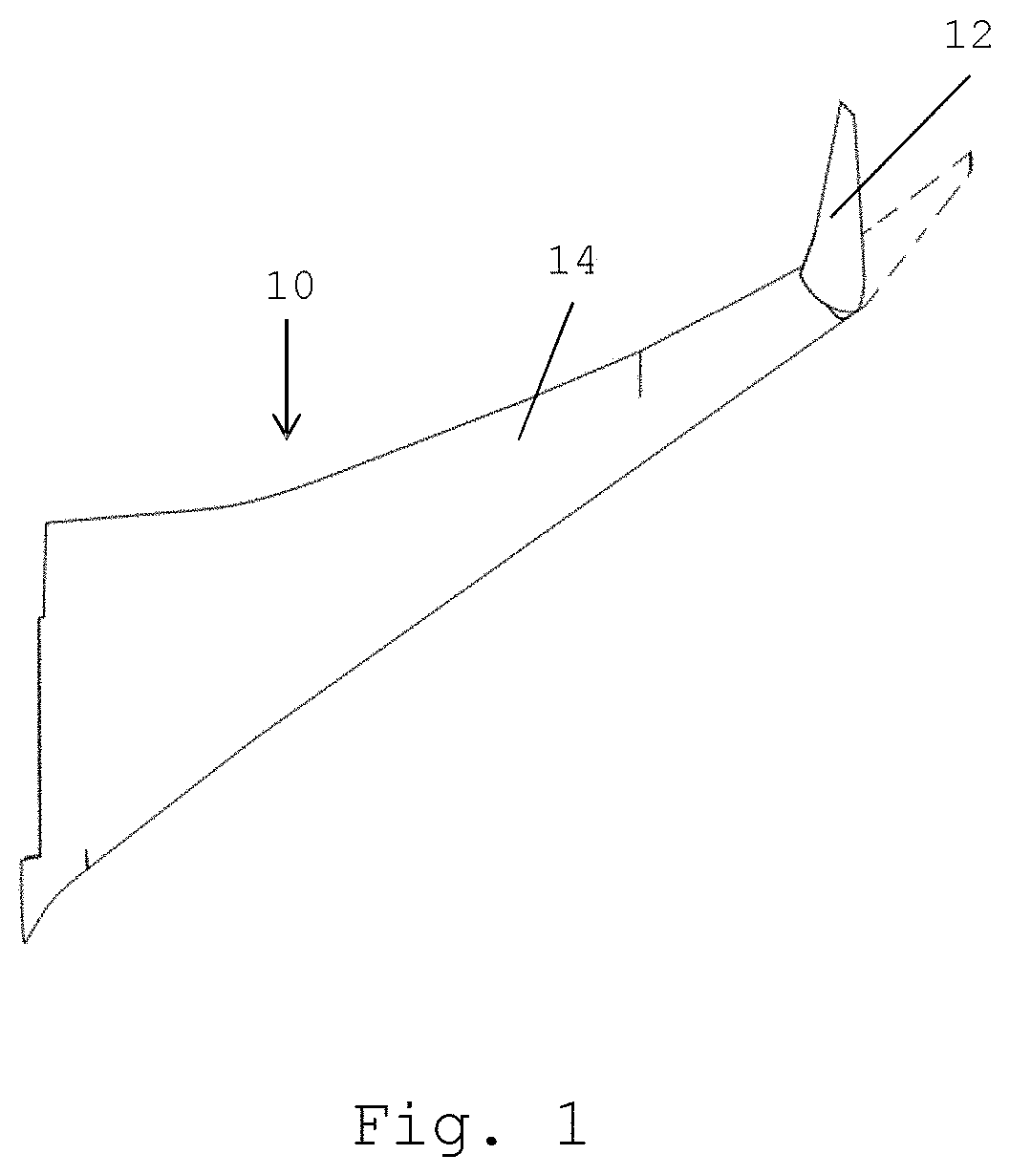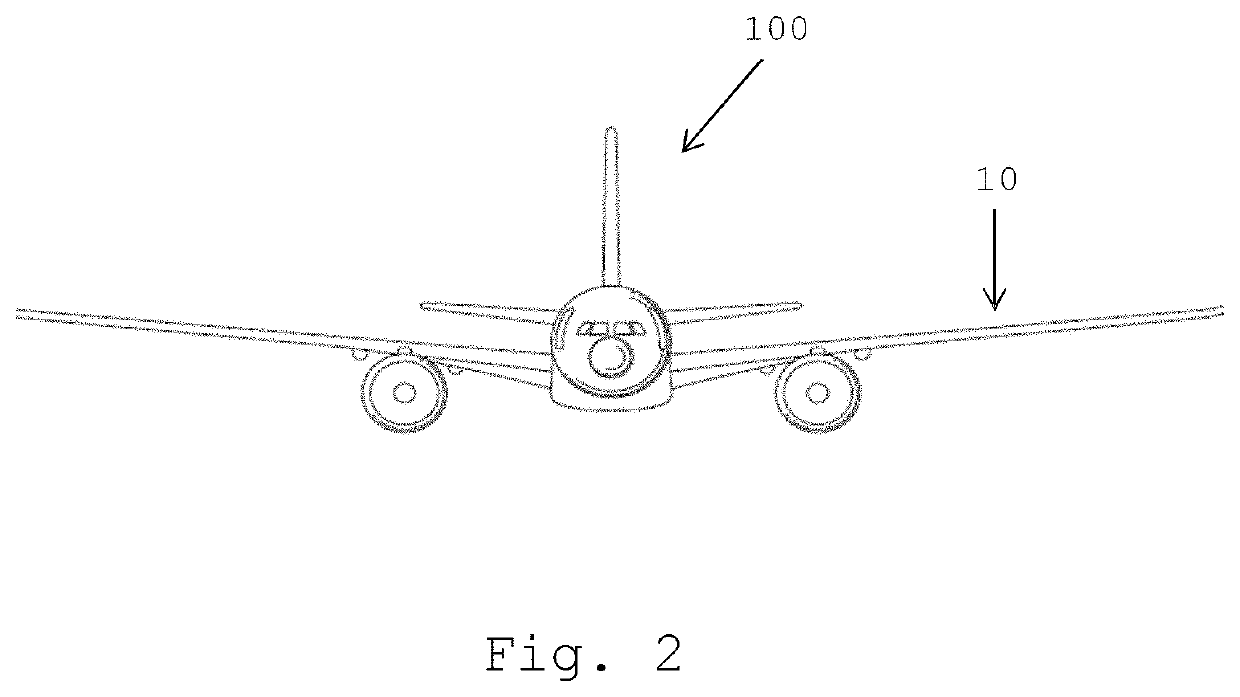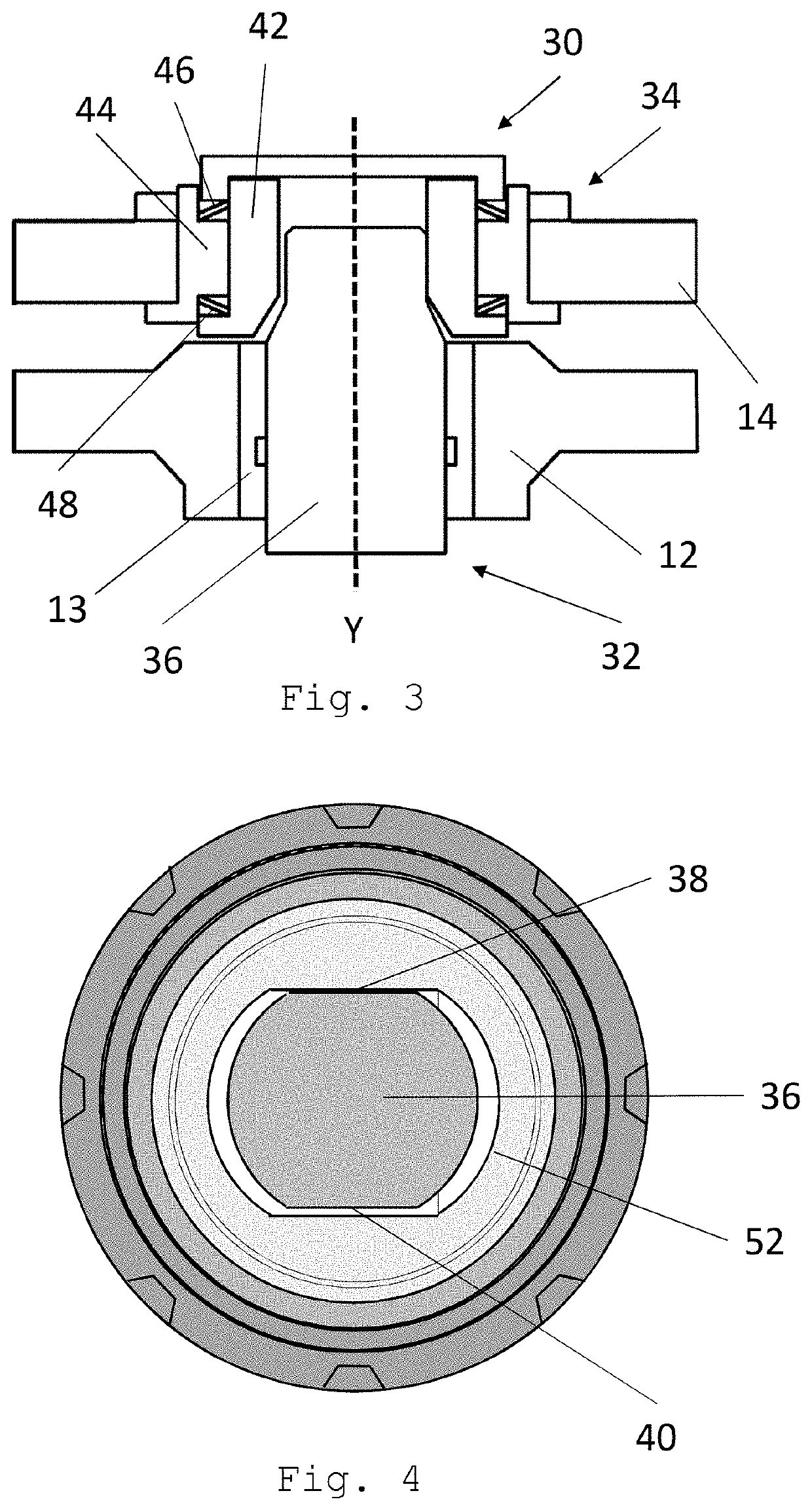Locking device
a technology of locking device and wing tip, which is applied in the direction of mechanical equipment, transportation and packaging, air-flow influencers, etc., can solve the problems of significant heat and wear, and achieve the effect of preventing the movement of the wing tip device out of the flight configuration
- Summary
- Abstract
- Description
- Claims
- Application Information
AI Technical Summary
Benefits of technology
Problems solved by technology
Method used
Image
Examples
Embodiment Construction
FIG. 1 shows an aircraft wing 10 comprising a fixed wing 12 and a wing tip device 14 at the tip thereof. The wing tip device 14 is configurable between a flight configuration (shown in dashed lines), suitable for flight, and a ground configuration (shown in solid lines), suitable for ground based operations, e.g. with the wing span within gate limits. When in the ground configuration, the span of the aircraft wing is reduced compared to the flight configuration.
FIG. 2 shows an aircraft 100, comprising a wing 10, as described above.
FIG. 3 shows a cross section of a locking mechanism 30. The locking mechanism 30 comprises a first part 32 forming part of the fixed wing 12 and a second part forming a part of the wing tip device 14. The first part comprises a male locking pin 36 with a longitudinal axis Y. The male locking pin 36 is roughly cylindrical, though with two opposed flat planar portions 38 and 40, as best shown in FIG. 4. The male locking pin 36 is moved forwards and backwards...
PUM
 Login to View More
Login to View More Abstract
Description
Claims
Application Information
 Login to View More
Login to View More - R&D
- Intellectual Property
- Life Sciences
- Materials
- Tech Scout
- Unparalleled Data Quality
- Higher Quality Content
- 60% Fewer Hallucinations
Browse by: Latest US Patents, China's latest patents, Technical Efficacy Thesaurus, Application Domain, Technology Topic, Popular Technical Reports.
© 2025 PatSnap. All rights reserved.Legal|Privacy policy|Modern Slavery Act Transparency Statement|Sitemap|About US| Contact US: help@patsnap.com



